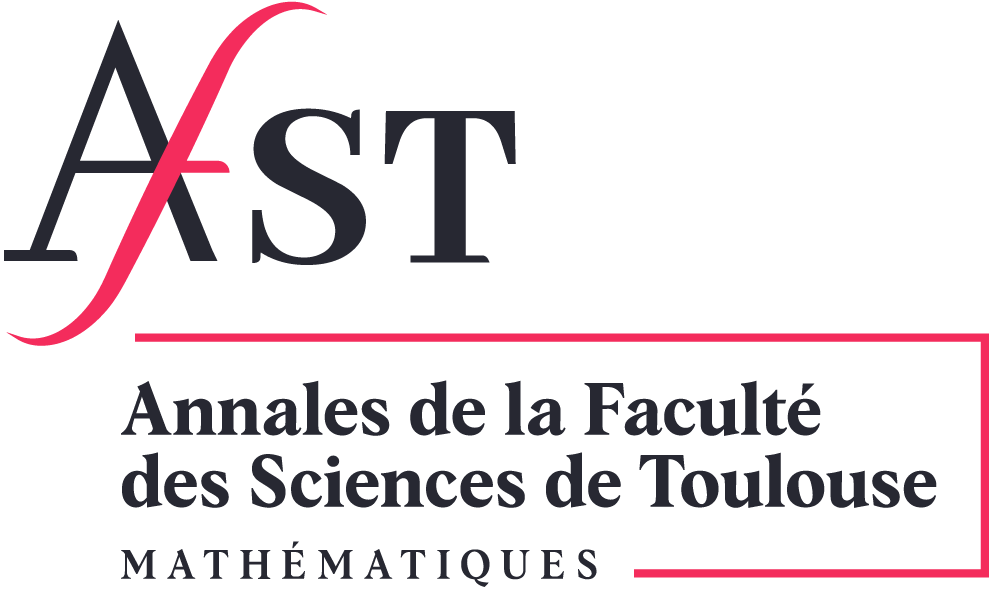Nous étudions dans cet article les grandes déviations et les grandes déviations locales pour des sommes de variables aléatoires réelles i.i.d. dans le domaine d’attraction d’une loi -stable, , en mettant l’accent sur le cas . Il y a deux scénarios différents : soit la déviation est réalisée par un comportement collectif où toutes les variables sommées contribuent à la déviation (un scénario gaussien), ou bien une seule des variables est atypiquement grande et contribue à la déviation (un scénario d’un unique grand saut). De tels résultats sont connus quand (les grandes déviations suivent toujours le scénario d’un grand saut) ou quand les variables admettent un moment d’ordre pour un . Nous étendons ces résultats, en incluant en particulier le cas où la distribution possède une queue à droite à variation régulière d’indice (traitant le cas de variables de variance infinie dans le domaine d’attraction de la loi normale). Nous identifions le seuil pour la transition entre le régime gaussien et le régime de grand saut ; ce seuil est légèrement plus grand lorsque l’on considère les grandes déviations locales comparées aux grandes déviations intégrées. De plus, nous complétons nos résultats en décrivant le comportement de la somme et de la plus grande variable sommée conditionnellement à avoir une grande déviation (ou une grande déviation locale), pour tout , à la fois dans le régime gaussien et dans le régime d’un grand saut. Comme application, nous montrons comment nos résultats peuvent être utilisés pour étudier le phénomène de condensation dans le processus de rang zéro (zero-range process) de densité critique, étendant le spectre des paramètres précédemment considérés dans la littérature.
This article studies large and local large deviations for sums of i.i.d. real-valued random variables in the domain of attraction of an -stable law, , with emphasis on the case . There are two different scenarios: either the deviation is realised via a collective behaviour with all summands contributing to the deviation (a Gaussian scenario), or a single summand is atypically large and contributes to the deviation (a one-big-jump scenario). Such results are known when (large deviations always follow a one big-jump scenario) or when the random variables admit a moment of order for some . We extend these results, including in particular the case where the right tail is regularly varying with index (treating cases with infinite variance in the domain of attraction of the normal law). We identify the threshold for the transition between the Gaussian and the one-big-jump regimes; it is slightly larger when considering local large deviations compared to integral large deviations. Additionally, we complement our results by describing the behaviour of the sum and of the largest summand conditionally on a (local) large deviation, for any , both in the Gaussian and in the one-big-jump regimes. As an application, we show how our results can be used in the study of condensation phenomenon in the zero-range process at the critical density, extending the range of parameters previously considered in the literature.
Accepté le :
Publié le :
Mots-clés : Large deviation, Local large deviation, Extended & intermediate regular variation, Phase transition, One-big-jump phenomenon, Condensation, $\alpha $-stable law
Quentin Berger 1 ; Matthias Birkner 2 ; Linglong Yuan 3
 CC-BY 4.0
CC-BY 4.0
@article{AFST_2024_6_33_5_1413_0,
author = {Quentin Berger and Matthias Birkner and Linglong Yuan},
title = {Collective vs. individual behaviour for sums of i.i.d. random variables: appearance of the one-big-jump phenomenon},
journal = {Annales de la Facult\'e des sciences de Toulouse : Math\'ematiques},
pages = {1413--1485},
publisher = {Universit\'e Paul Sabatier, Toulouse},
volume = {Ser. 6, 33},
number = {5},
year = {2024},
doi = {10.5802/afst.1802},
language = {en},
url = {https://afst.centre-mersenne.org/articles/10.5802/afst.1802/}
}
TY - JOUR AU - Quentin Berger AU - Matthias Birkner AU - Linglong Yuan TI - Collective vs. individual behaviour for sums of i.i.d. random variables: appearance of the one-big-jump phenomenon JO - Annales de la Faculté des sciences de Toulouse : Mathématiques PY - 2024 SP - 1413 EP - 1485 VL - 33 IS - 5 PB - Université Paul Sabatier, Toulouse UR - https://afst.centre-mersenne.org/articles/10.5802/afst.1802/ DO - 10.5802/afst.1802 LA - en ID - AFST_2024_6_33_5_1413_0 ER -
%0 Journal Article %A Quentin Berger %A Matthias Birkner %A Linglong Yuan %T Collective vs. individual behaviour for sums of i.i.d. random variables: appearance of the one-big-jump phenomenon %J Annales de la Faculté des sciences de Toulouse : Mathématiques %D 2024 %P 1413-1485 %V 33 %N 5 %I Université Paul Sabatier, Toulouse %U https://afst.centre-mersenne.org/articles/10.5802/afst.1802/ %R 10.5802/afst.1802 %G en %F AFST_2024_6_33_5_1413_0
Quentin Berger; Matthias Birkner; Linglong Yuan. Collective vs. individual behaviour for sums of i.i.d. random variables: appearance of the one-big-jump phenomenon. Annales de la Faculté des sciences de Toulouse : Mathématiques, Série 6, Tome 33 (2024) no. 5, pp. 1413-1485. doi : 10.5802/afst.1802. https://afst.centre-mersenne.org/articles/10.5802/afst.1802/
[1] Zero-range condensation at criticality, Stochastic Processes Appl., Volume 123 (2013) no. 9, pp. 3466-3496 | DOI | MR | Zbl
[2] Thermodynamic limit for the invariant measures in supercritical zero range processes, Probab. Theory Relat. Fields, Volume 145 (2009) no. 1, pp. 175-188 | DOI | MR | Zbl
[3] A new class of large claim size distributions: Definition, properties, and ruin theory, Bernoulli, Volume 21 (2015) no. 4, pp. 2457-2483 | DOI | MR | Zbl
[4] Notes on random walks in the Cauchy domain of attraction, Probab. Theory Relat. Fields, Volume 175 (2019) no. 1, pp. 1-44 | DOI | MR | Zbl
[5] Strong renewal theorems and local large deviations for multivariate random walks and renewals, Electron. J. Probab., Volume 24 (2019), 46, 47 pages | DOI | MR | Zbl
[6] Regular variation, Encyclopedia of Mathematics and Its Applications, 27, Cambridge University Press, 1989 | MR | Zbl
[7] Coalescent results for diploid exchangeable population models, Electron. J. Probab., Volume 23 (2018), 49, 44 pages | DOI | MR | Zbl
[8] A diploid population model incorporating selection, mutation and possibly highly skewed offspring distributions (2025) (manuscript in preparation)
[9] Large deviations probabilities for random walks in the absence of finite expectations of jumps, Probab. Theory Relat. Fields, Volume 125 (2003) no. 3, pp. 421-446 | DOI | MR | Zbl
[10] Local large deviations and the strong renewal theorem, Electron. J. Probab., Volume 24 (2019), 72, 48 pages | DOI | MR | Zbl
[11] Intermediate regular and variation, Proc. Lond. Math. Soc. (3), Volume 68 (1994) no. 3, pp. 594-616 | DOI | MR | Zbl
[12] Large deviation probabilities for sums of random variables with heavy or subexponential tails, 1998 (https://people.tamu.edu/~dcline/Papers/large5.pdf)
[13] Large deviations for random walks under subexponentiality: the big-jump domain, Ann. Probab., Volume 36 (2008) no. 5, pp. 1946-1991 | DOI | MR | Zbl
[14] A large deviation local limit theorem, Math. Proc. Camb. Philos. Soc., Volume 105 (1989) no. 3, pp. 575-577 | DOI | MR | Zbl
[15] One-sided local large deviation and renewal theorems in the case of infinite mean, Probab. Theory Relat. Fields, Volume 107 (1997) no. 4, pp. 451-465 | DOI | MR | Zbl
[16] A local limit theorem for moderate deviations, Bull. Lond. Math. Soc., Volume 33 (2001) no. 1, pp. 100-108 | DOI | MR | Zbl
[17] Phase transitions in one-dimensional nonequilibrium systems, Braz. J. Phys., Volume 30 (2000), pp. 42-57 | DOI
[18] An introduction to probability theory and its applications. Vol. II, John Wiley & Sons, 1966 | Zbl
[19] An introduction to heavy-tailed and subexponential distributions, Springer Series in Operations Research and Financial Engineering, Springer, 2013 | DOI | MR | Zbl
[20] On the limit law of a random walk conditioned to reach a high level, Stochastic Processes Appl., Volume 121 (2011) no. 2, pp. 288-313 | DOI | MR | Zbl
[21] Approximate local limit theorems with effective rate and application to random walks in random scenery, Bernoulli, Volume 23 (2017) no. 4B, pp. 3268-3310 | DOI | MR | Zbl
[22] Limit distributions for sums of independent random variables, Addison-Wesley Mathematics Series, Addison-Wesley Publishing Group, 1954 | MR | Zbl
[23] Condensation in the zero range process: stationary and dynamical properties, J. Stat. Phys., Volume 113 (2003) no. 3, pp. 389-410 | DOI | MR | Zbl
[24] Size of the largest cluster under zero-range invariant measures, Ann. Probab., Volume 28 (2000) no. 3, pp. 1162-1194 | DOI | MR | Zbl
[25] The fewest-big-jumps principle and an application to random graphs (2022) | arXiv
[26] Limit theorems for conditioned non-generic Galton–Watson trees, Ann. Inst. Henri Poincaré, Probab. Stat., Volume 51 (2015) no. 2, pp. 489-511 | DOI | Numdam | MR | Zbl
[27] Condensation in critical Cauchy Bienaymé–Galton–Watson trees, Ann. Appl. Probab., Volume 29 (2019) no. 3, pp. 1837-1877 | DOI | Zbl
[28] The boundary of random planar maps via looptrees, Ann. Fac. Sci. Toulouse, Math. (6), Volume 29 (2020) no. 2, pp. 391-430 | DOI | Numdam | MR | Zbl
[29] On a generalization of regularly increasing functions, Stud. Math., Volume 24 (1964) no. 3, pp. 271-279 | DOI | MR | Zbl
[30] Analytic proof of multivariate stable local large deviations and application to deterministic dynamical systems, Electron. J. Probab., Volume 27 (2022), pp. 1-17 | DOI | MR | Zbl
[31] Large deviations of heavy-tailed sums with applications in insurance, Extremes, Volume 1 (1998) no. 1, pp. 81-110 | DOI | MR | Zbl
[32] An integro-local theorem that is applicable on the whole half-axis for sums of random variables with regularly varying distributions, Sib. Mat. Zh., Volume 49 (2008) no. 4, pp. 837-854 | Zbl
[33] Local limit theorems for lattice random variables, Theory Probab. Appl., Volume 36 (1991) no. 4, pp. 698-713 | DOI | Zbl
[34] Large deviations of sums of independent random variables, Ann. Probab., Volume 7 (1979), pp. 745-789 | DOI | MR | Zbl
[35] Probabilities of large deviations of sums of independent random variables with common distribution function in the domain of attraction of the normal law, Theory Probab. Appl., Volume 34 (1990) no. 4, pp. 625-644 | DOI | Zbl
[36] Probabilities of large deviations on the whole axis, Theory Probab. Appl., Volume 38 (1993) no. 1, pp. 53-79 | Zbl
[37] Coalescent processes obtained from supercritical Galton–Watson processes, Stochastic Processes Appl., Volume 106 (2003) no. 1, pp. 107-139 | DOI | Zbl
[38] An improvement of convergence rate in the local limit theorem for integral-valued random variables, J. Inequal. Appl., Volume 2021 (2021) no. 1, 57, 18 pages | DOI | Zbl
[39] On local and ratio limit theorems, Proceedings of the Fifth Berkeley Symposium on Mathematical Statistics and Probability. Vol. II: Contributions to probability theory. Part 2., University of California Press (1967), pp. 217-224 | Zbl
[40] The Space D, Stochastic-process limits: an introduction to stochastic-process limits and their application to queues (Springer Series in Operations Research and Financial Engineering), Springer, 2002, pp. 391-426 | DOI
[41] Condensation of the invariant measures of the supercritical zero range processes, J. Stat. Phys., Volume 191 (2024) no. 6, 71 | DOI
Cité par Sources :




